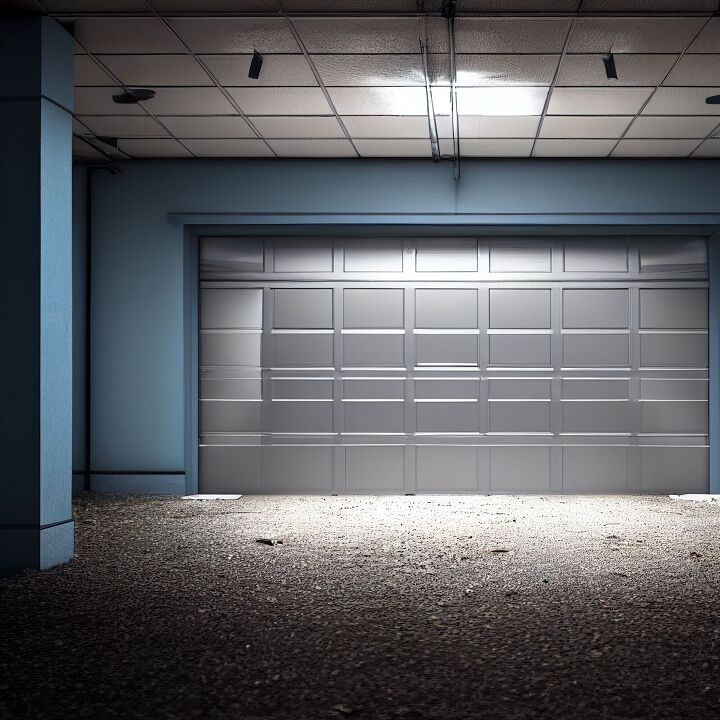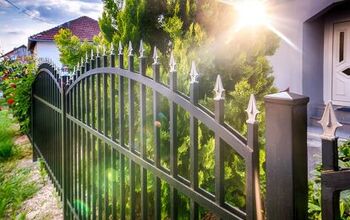What Kind Of Paint For Garage Walls?

Painting your garage is a great way to improve the look of the space and make the walls easier to clean. But you might be struggling to figure out what kind of paint to use on garage walls. Your garage is sort of inside but sort of outside, so what paint is best?
Interior latex paints designed for high-traffic areas and in a satin or semi-gloss finish are best for garage walls. These paints dry quickly, emit minimal odors, and provide easy clean-up. Avoid using exterior paints, since they have more intense fumes and toxins, and garages aren’t always well-ventilated. Top picks for garage wall paint are Glidden Interior Paint + Primer and Montage Signature Interior Paint.
If you plan to paint your garage, there are a few tips worth checking out first. At the top of the list is using the right paint, so you don’t end up regretting your choice.
Should I Paint My Garage Walls?
Painting garage walls helps protect the walls and makes it simpler to maintain them. It’s easier to clean stains and scuffs on a painted surface. Plus, painting the walls will make your garage a much more aesthetically pleasing place to be.
Use Interior Latex Paint On Garage Walls
The best paint for your garage walls is interior latex paint. It’s understandable if you assume that using exterior paint in a garage makes the most sense. After all, your garage is sort of outside and likely exposed to more intense temperatures than the inside of your home.
However, exterior paints typically emit more potent odors than interior ones because of the anti-mildew components and higher VOCs. These exterior paints can produce harmful fumes without proper ventilation, which is why they’re specifically for outdoor use. Therefore, interior paint is your best option.
Choosing latex paints over oil-based versions is also ideal. Oil-based paints indeed deliver a hard shell that offers extreme durability. However, they take longer to dry, are challenging to clean up, and require more painting savvy.
In contrast, latex paints emit less odors and fumes, are easier to clean up, and dry more quickly. Look for latex paints designed for high-traffic areas that offer more durability, provide mildew resistance, and hide stains well.
Four Top Paints For Garage Walls
Here are four great options to choose from when you’re painting garage walls.
What Paint Finish Is Best For Garage Walls?
Another important choice when choosing wall paint for your garage is to pick the right finish. Flat paint doesn’t work well for garages because the dull finish makes cleaning more difficult.
Therefore, opt for eggshell or satin finishes or even a semi-gloss. These finishes offer a smooth, polished look that is much easier to clean. Avoid high-gloss finishes, as the shinier appearance makes dents, dings, and other imperfections more noticeable.
Five More Things To Consider When Choosing Paint For Garage Walls
You’ve narrowed down your options to an interior latex paint with a satin, eggshell, or semi-gloss finish, but you’ll discover that you still have tons of options that fall under this relatively large umbrella.
So, when you’re perusing all of the interior latex paints filling the home improvement and paint store shelves, what else should you consider?
1. The VOCs
Many paints contain volatile organic compounds (VOCs), which are gasses that seep into the air. When the paint is high in VOCs, you’ll notice a much stronger odor. It’s critical to work with proper ventilation and safety gear, as overexposure to these gasses can cause a host of issues.
You could experience irritation in your eyes, throat, nose, and airways, get headaches and feel dizzy or nauseous. If you use this type of paint in areas with poor ventilation, overexposure can lead to even more severe issues.
Even though your garage will receive some decent ventilation whenever you have your garage door open, it won’t always be this way. Therefore, it’s wise to look for paints with low or no VOCs.
Technically, even no-VOC paint still has a minimal amount. The EPA distinguishes these paints as having a maximum of 5 grams of VOC per liter. For low-VOC water-based paints, there should be no more than 250 grams per liter.
2. The Surface You’re Painting
Make sure the paint you choose is ideal for your garage wall type. For example, some paints are great for drywall but won’t work well on metal. Other paints are specifically formulated for cinder blocks or concrete, while some work on multiple surfaces. Therefore, make sure the paint you pick is suitable for the wall material.
3. Environmental Conditions Of Your Garage
Your garage might be climate-controlled, or like many garages, it might not be. Your garage likely experiences temperature fluctuations and issues like moisture and humidity (albeit not as much as an entirely exterior space). If this is the case, look for an interior latex paint that works well in these conditions. You can also find paints that provide mildew resistance.
4. The Quality Of The Paint
Garages see a lot of action, so you want to pick durable paint. Your best bet is to go with high-quality paint that contains more solids. These paints provide more durability, meaning they’ll hold up better. So, don’t skimp on your budget and quality when it comes to picking paint for garage walls.
5. The Paint Color
Once you’ve decided on the paint you want to use, it’s time for the fun part — picking the color. Most paint stores allow you to get pretty much any color you desire in various paints. Try out some of your favorites as samples first to ensure you’re 100% certain of your color choice.
Tips When Painting Garage Walls
Before any painting project, make sure your surfaces are clean and dry. Wipe down the walls, get rid of any grime or gunk, and allow them to dry completely.
You’ll likely want to prime your garage walls first, unless they’re already painted with a light color and have no stains. Otherwise, priming keeps unfinished surfaces from soaking up all of your paint. Priming also helps block stains from seeping through your finished paint job.
An exception is if the walls are painted with oil-based paint. You can’t paint latex paint directly over oil-based paint. First, sand down the walls to remove the sheen so your latex paint adheres properly. Dust the walls to remove any residue, then use a bonding primer for the best coverage.
Likewise, if your walls are painted with a dark color and you plan to change them to a lighter color, use a primer. You won’t have to use as many coats of paint to cover the darker color, saving you time and money.
After painting, allow the walls at least 24 hours to dry before you start putting things back in place or installing shelving, etc. For best results, avoid anything touching the walls for at least 48 hours.
It’s also important to allow enough time for the paint to dry between coats. When using latex paint, typically, the suggested time is four hours, but consult the recommendations on your specific paint’s instructions.
Interior Latex Paint Works Well On Garage Walls
If you’re planning to paint your garage walls, water-based interior latex paint is easy to work with and provides great coverage. Choose a high-quality paint and opt for a satin, eggshell, or semi-gloss finish. Avoid exterior paints, since they typically have higher VOCs and won’t get an adequate amount of ventilation in an enclosed garage.
Check the label of any paints you consider to make sure they’re a good match for your wall’s surface. Some paints work better on concrete, while others are ideal for drywall, etc. Once you know the type of paint you plan to use, you can test out various colors.
Giving your garage a makeover with a fresh coat of paint makes it nicer to look at but also makes the walls easier to clean. You can tackle the project in a weekend, then kick back and relish in a job well done.
Related Guides:

Stacy Randall is a wife, mother, and freelance writer from NOLA that has always had a love for DIY projects, home organization, and making spaces beautiful. Together with her husband, she has been spending the last several years lovingly renovating her grandparent's former home, making it their own and learning a lot about life along the way.
More by Stacy Randall



























